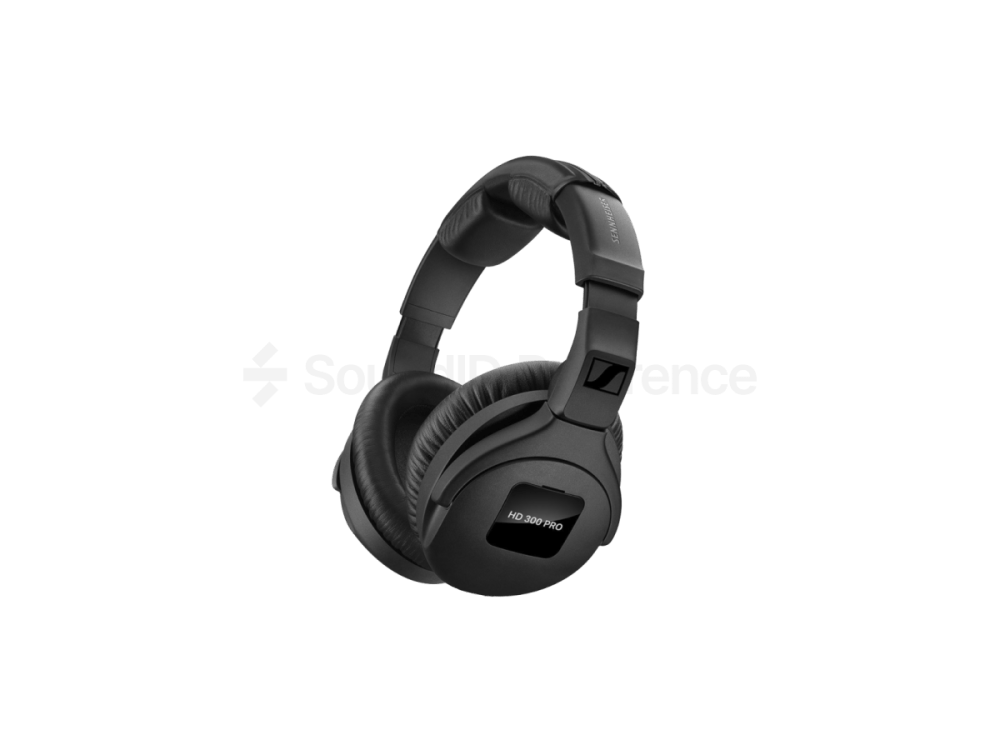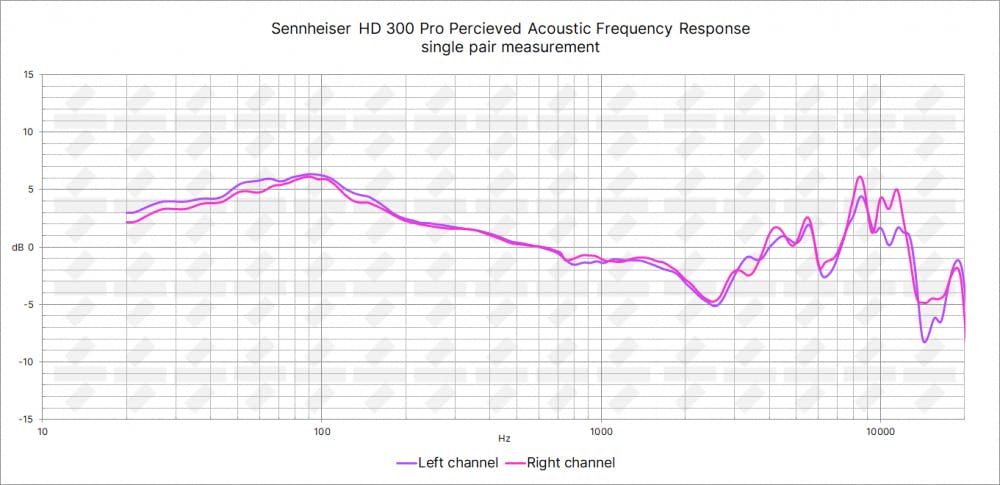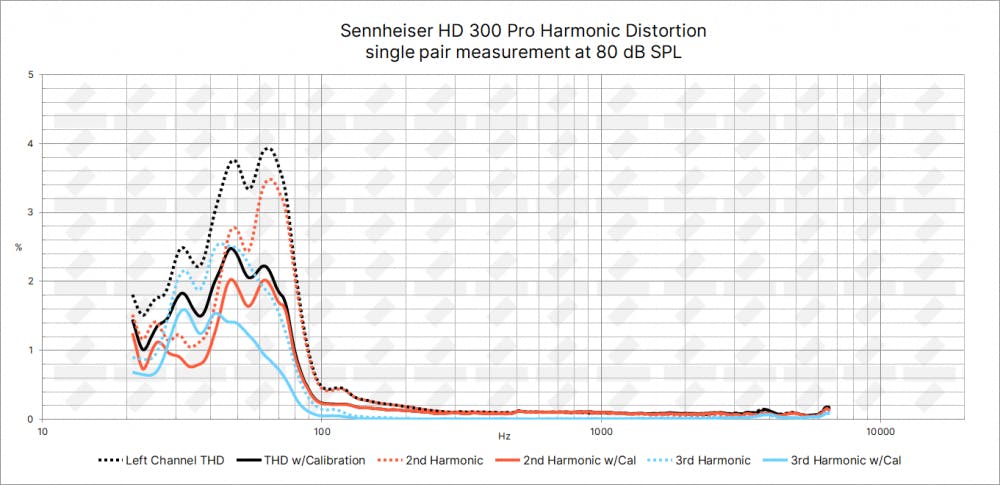Regardless of the fact that we at Sonarworks consider Sennheiser HD 650 to be one of the most “pro” studio mixing headphones ever, Sennheiser categorizes them as audiophile gear and at the top of their Pro headphone hierarchy put the HD 300 Pro – a closed-back set with a bias towards recording and on-site monitoring. At first glance HD 300 Pro doesn’t seem that different from the more affordable HD 280 Pro. Let’s examine what are the similarities, what’s different and in what roles they perform best.
- Good sound isolation
- Robust build
- Foldable design
- Relatively flat frequency response
- Easy to drive
Pros list with SoundID Reference calibration
- Neutral frequency response
- Comfort not for long sessions
While impedance is moderate 64Ω, sensitivity is quite high. This combo makes the HD 300 Pro easy to drive from mobile devices, and since Reference requires only 7dB for Safe Headroom, volume is no issue even when they’re plugged in a laptop and used with calibration
HD 300 Pro build is entirely plastic, but the material is hard and seems durable, overall giving a reassuring impression that the headphones won’t fail easily. The robust build paired with the foldable design means that they’ll be easy to pack for carrying around and a dedicated hard case isn’t required.
It seems that the headband is the same unit used on HD 280 Pro, but the cushion is upgraded with slowly rebounding foam and a nicer synthetic leather cover. The same treatment is applied to the ear pads.
Unlike HD 280 Pro, the cable is detachable and has two uncommon features. First, the possibility to unplug the cable by accident is eliminated by mounting it on the earcup with two Torx screws. And another neat touch is the velcro strap that’s wrapped around the cable, which helps to manage the cable for transportation or storage.
Sennheiser has done a remarkable job tuning HD 300 Pro so there’s relatively little work left for calibration to get them perfect. The shape of the curve follows the “smiley face” pattern with boosts in bass and highs, but since these boosts are conservative, and throughout the spectrum there are only two abrupt dips, the coloring remains tame and the sound is relatively balanced. With that said, there’s still a tangible improvement to be gained with calibration, as it reduces the low-mid mud and improves clarity in the high-mid range and highs.
All pairs had some left to right inconsistencies, but relatively minor ones, spanning narrow frequency bandwidth and not exceeding 2dB in amplitude. These imperfections shouldn’t cause much issue when producing or tracking but are not ideal for mixing and mastering.
With HD 300 Pros it’s clear that Sennheiser chose good sound isolation over long session comfort. While the headband cushions and ear pads feel rather soft and comfy at first, none of our testers found them a suitable option for extended mixing sessions, and that comes as no surprise, given how strong the clamping force is. But don’t be discouraged if you’re looking at HD 300 Pros as recording headphones, the comfort is ok for tracking duties.
When compared to Sennheiser HD 280 Pro, the contact points are nicer, but that has very little effect on overall comfort since the pressure applied by the clamping force is the same for both models.
There’s no question that HD 300 Pro is an upgrade over HD 280 Pro with its better build, sound and adaptiveness. The price difference is reasonable, if anything, HD 280 Pro’s should be more affordable, while the €169 / $200 asked for the HD 300 Pro seems fair, given that these are among the top tracking headphones available.
It’s not the prettiest of THD graphs but with calibration enabled the numbers get pretty much halved and regardless of calibration being engaged or not, no audible distortion artefacts showed up in our listening tests.
How accurate and consistent is the correction effect among different listeners?Regarding adaptiveness, the bass response will vary a bit from listener to listener, but in most cases, it should stay between +/- 3dB. Mids stay very consistent and in the higher frequency range issues in most cases should stay within the same +/- 3dB
How much do they differ pair to pair in terms of frequency response?In typical Sennheiser fashion, pair-to-pair consistency is superb and there are no issues to report apart from the minor channel differences.
Rating
Conclusion
HD 300 Pros have a solid build, relatively natural sound and great sound isolation, furthermore, they’re easy to drive and easy to transport. The high manufacturing consistency and reliable adaptiveness result in improved accuracy when used with the SoundID Reference model average calibration profile. Given these strengths, there are two use-cases where they excel – tracking and producing/mixing on the go, as long as you keep your sessions brief or take regular breaks since the compromised comfort won’t let you keep them on for long.
The pricing is adequate and HD 300 Pro is a sound investment if you’re looking for headphones for either or both of the use-cases discussed above. In case the budget is a concern, skip the HD 280 Pro and go straight to Audio-Technica ATH-M20x.
For more information about Sennheiser headphones, please read our other reviews – HD 560S, HD 200 Pro, HD 280 Pro, and HD 600 S.
You can calibrate your existing HD 300 headphones with our headphone calibration software SoundID Reference or by sending them in for individual calibration.
Final Rating
Calibration Enabled
Calibration









